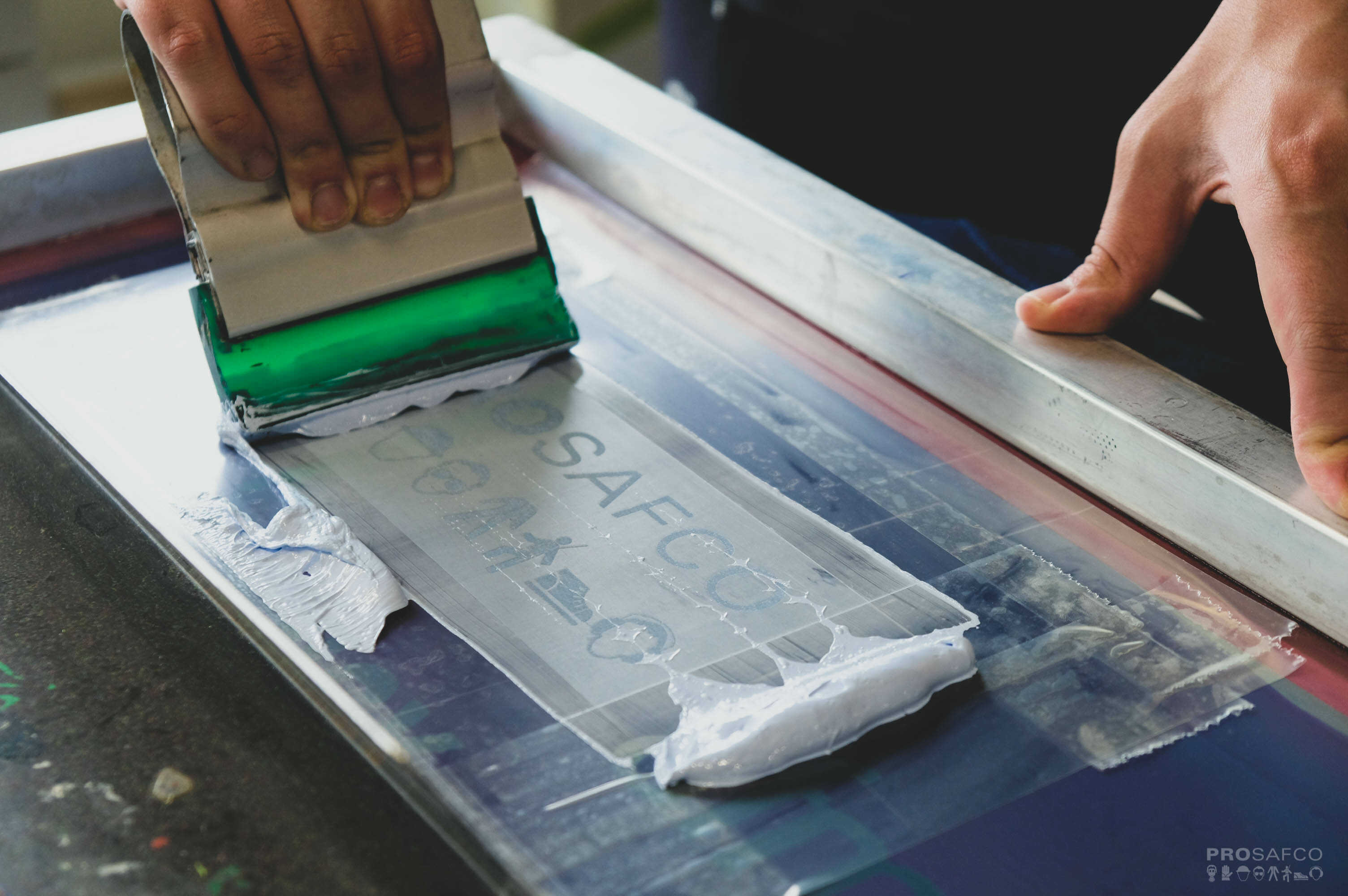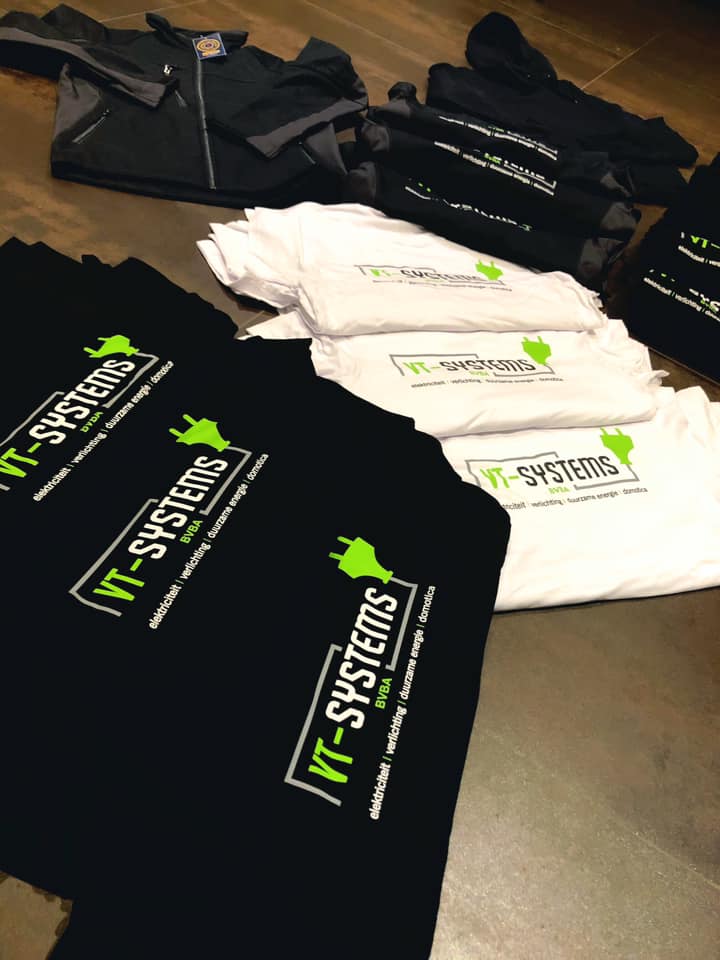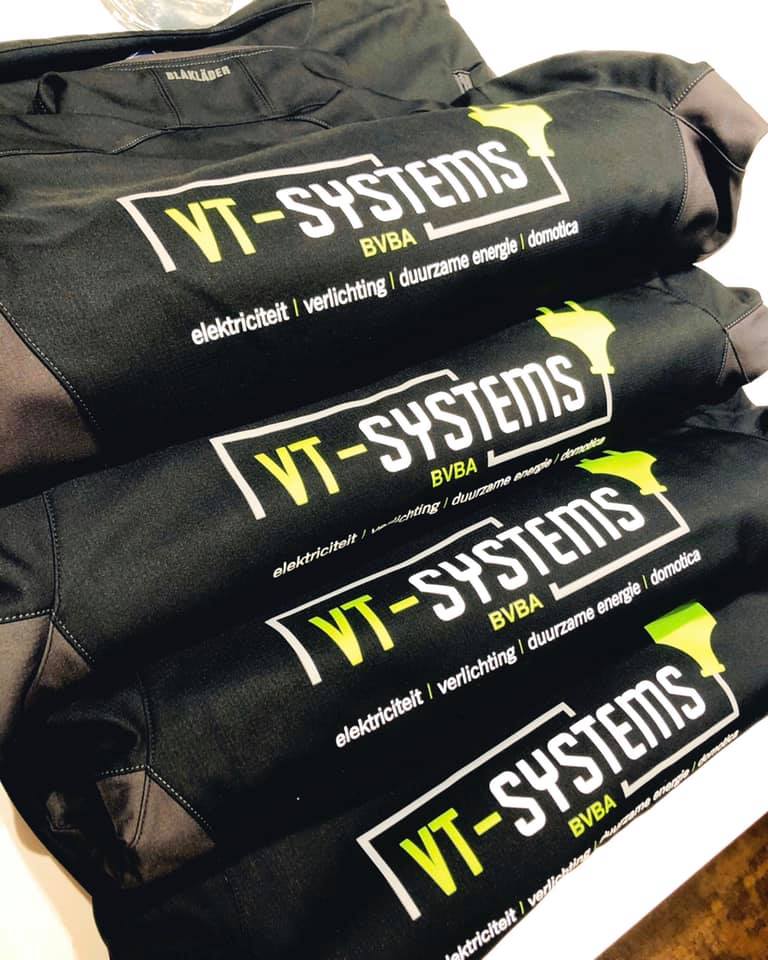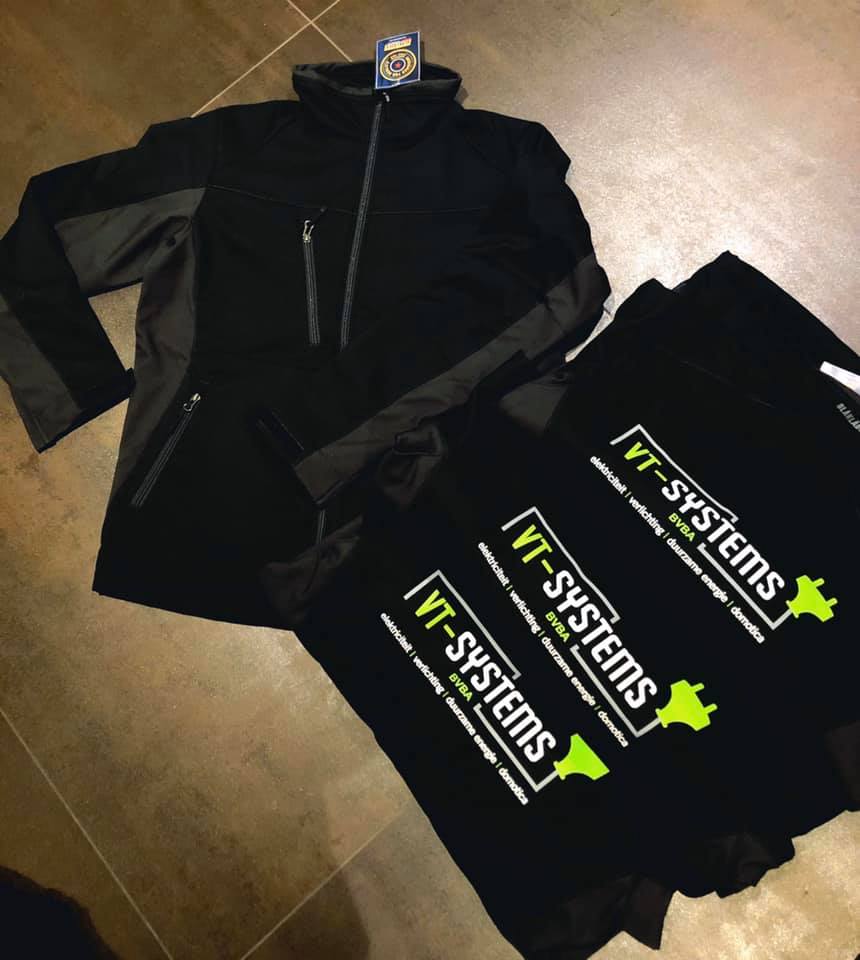Silkscreen
 Silkscreen printing is the most common textile printing technique where printing is done directly on the textile. The principle of the screen printing technique is quite simple, a piece of fine mesh of silk or polyester is stretched over a frame. The screen printing frame is then provided with a light-sensitive layer which is exposed by means of a positive film. The dark areas present on the positive are washed away during development so that permeable spots are created on the screen printing frame, through which the ink is pressed. After the screen-printing frames have been micro-adjusted, tape is applied around the logo so that no irregularities and dots are printed. The ink is then applied to the frame and spread with the aid of a squeegee, so that the shape of the stencil is printed on the object to be printed. This technique can be repeated with different colors and shapes printed side by side or over each other. Silkscreen ink has good opacity; this means that it can also be printed on dark textiles.
Silkscreen printing is the most common textile printing technique where printing is done directly on the textile. The principle of the screen printing technique is quite simple, a piece of fine mesh of silk or polyester is stretched over a frame. The screen printing frame is then provided with a light-sensitive layer which is exposed by means of a positive film. The dark areas present on the positive are washed away during development so that permeable spots are created on the screen printing frame, through which the ink is pressed. After the screen-printing frames have been micro-adjusted, tape is applied around the logo so that no irregularities and dots are printed. The ink is then applied to the frame and spread with the aid of a squeegee, so that the shape of the stencil is printed on the object to be printed. This technique can be repeated with different colors and shapes printed side by side or over each other. Silkscreen ink has good opacity; this means that it can also be printed on dark textiles.Do's & Dont's
With screen printing, not everything is possible and we have to follow some technical rules. The points below summarize the most important rules.
- Max print size
- Front or back: 38 cm x 45 cm
- Sleeves: 8cm x 35cm - Attention possible in different colors BUT that do not touch each other
- Carrier bags
- Safety vests
- Nylon - Not printable
- Lined jackets or body warmers (if there is a zipper at the bottom)
- Not about stitching
- Wool sweaters - Fleece Rules
- White no problem
- Other colors also work but they can't touch each other
- No fine details or logos with a lot of details (This is printed with 'Puff ink' and it swells after drying)
- Micro fleece is printable with a maximum of 3 colors
Delivery of files
The software used is Illustrator CS4 (and below) and Photoshop CS4 (and below). For large format it is important to deliver in a high resolution. We recommend that you sharpen all drawings and vectorize logos and texts with vector software such as Adobe Illustrator. The vector drawings can be enlarged without loss of quality.
Photos are enhanced in a program like Photoshop. These images consist of pixels and cannot be enlarged without loss of quality. It is therefore important to deliver the documents in sufficient resolution (at least 300dpi) for the format to be printed.
Files for illustrator (logos, texts, drawings): .ai, .eps (saved from vectorized file), .pdf (saved from vectorized file)
Files for photoshop (for photos that will be printed in a grid): .tiff, .jpg, .pdf, .psd, .eps, ..

 français (Belgique)
français (Belgique)
 Nederlands (België)
Nederlands (België)





